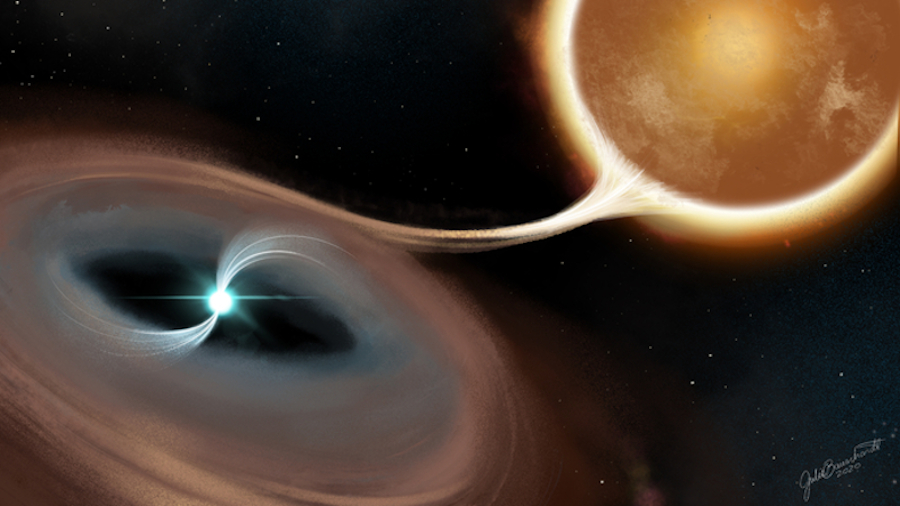
 Credit: Julie Bauschardt; NuSTAR; NASA; Shaw et al. (2020)
Credit: Julie Bauschardt; NuSTAR; NASA; Shaw et al. (2020)
Pushing White Dwarfs Over the Edge
White dwarfs are the earth-sized "star cinders", the leftover compressed core of a star like the Sun that's no longer able to create energy by fusing elements together. When this terminal stage is reached, the outer atmosphere of the star becomes detached from the core (often forming a beautiful "planetary nebula"), while the hot core, with a mass comparable to the mass of the Sun but compressed by a factor of 100 to about the size of earth, appears as a white dwarf. Because they've got so much mass packed into such a small space, they're incredibly dense: a teaspoonful of a white dwarf would have as much mass as an automobile. White dwarfs are ticking time bombs, since they are supported by a strange effect of quantum mechanics called "electron degeneracy pressure", and this degeneracy pressure can only support a limited amount of mass (about 1.4 times the mass of the Sun). If a white dwarf exceeds this mass limit (called the "Chandrasekhar limit" in honor of Subrahmanyan Chandrasekhar, who discovered it), it will collapse, triggering a thermonuclear explosion. These powerful explosions can briefly generate as much light as an entire galaxy of stars. Somewhat surprisingly, we see these explosions happen all the time. These exploding white dwarfs are useful "astronomical standard candles" since they all put out about the same amount of energy, and can be seen to enormous distances. Studies of exploding white dwarfs have helped astronomers discover the mysterious "dark energy" driving the Universe apart. But before a white dwarf can explode, it needs to gain mass from somewhere. A new study using the NuSTAR X-ray satellite mission of a class of white dwarfs with extremely strong magnetic fields residing in binary systems (like the one shown in the illustration above) has helped examine the issue of how white dwarfs gain and retain mass. In these accreting magnetic binaries, the white dwarf pulls mass from the companion star. The mass is funneled by the strong magnetic field onto the north and south magnetic polls of the white dwarf, generating X-ray emission. By analysing the X-ray emission from these systems with NuSTAR, astronomers can constrain the mass of the white dwarf. This NuSTAR study suggests that such accreting white dwarfs are about 50% more massive than non-accreting, isolated white dwarfs, which perhaps suggests that white dwarfs in binaries can steal enough matter from their companion stars, perhaps even enough to push them over the electron degeneracy edge.
Published: December 7, 2020
<
HEA Dictionary ● Archive
● Search HEAPOW
● Other Languages
● HEAPOW on Facebook
● Download all Images
● Education ● HEAD
>

Each week the HEASARC
brings you new, exciting and beautiful images from X-ray and Gamma ray
astronomy. Check back each week and be sure to check out the HEAPOW archive!
Page Author: Dr. Michael F. Corcoran
Last modified Monday, 26-Feb-2024 17:22:39 EST


